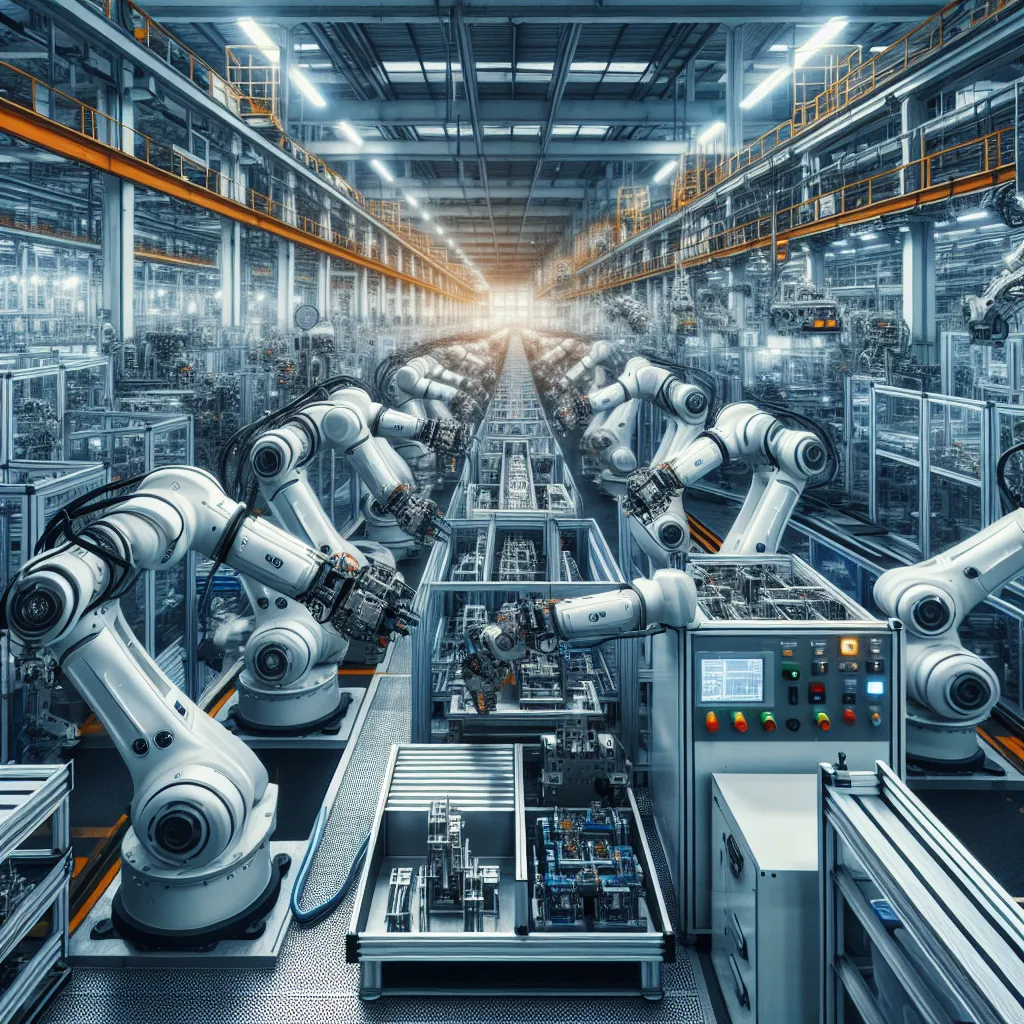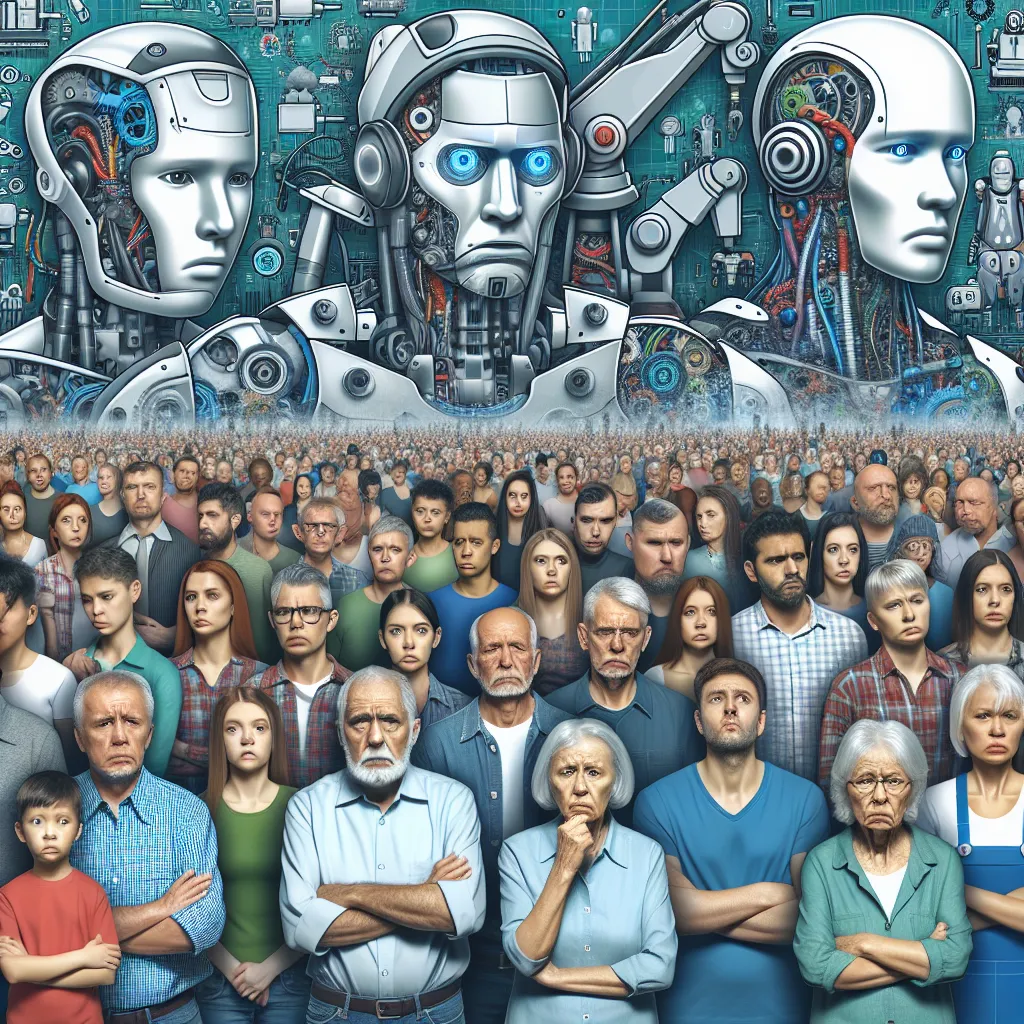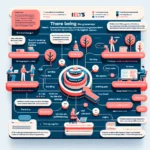Are you preparing for the IELTS Reading test and looking for practice materials on contemporary topics? Look no further! This comprehensive IELTS Reading practice test focuses on “The Future of Work in an Automated World,” a subject that is increasingly relevant in today’s rapidly evolving job market. As an experienced IELTS instructor, I’ve crafted this test to closely mimic the actual IELTS exam, complete with three passages of increasing difficulty and a variety of question types. Let’s dive in and sharpen your reading skills while exploring this fascinating topic!
Passage 1 – Easy Text
The Changing Landscape of Employment
The world of work is undergoing a dramatic transformation due to rapid advancements in technology and automation. As we move further into the 21st century, the traditional notion of employment is being challenged by the rise of artificial intelligence (AI), robotics, and machine learning. These technological innovations are reshaping industries across the globe, leading to both excitement and apprehension about the future of work.
One of the most significant changes is the increasing prevalence of automation in various sectors. Tasks that were once performed exclusively by humans are now being taken over by machines and algorithms. This shift is particularly evident in manufacturing, where robots have become commonplace on factory floors, enhancing productivity and efficiency. However, automation is not limited to blue-collar jobs; white-collar professions such as accounting, law, and even journalism are experiencing the impact of AI and automated systems.
 factory automation
factory automation
While some fear that automation will lead to widespread job losses, many experts argue that it will create new opportunities and transform existing roles. As routine tasks are automated, human workers are likely to focus more on complex problem-solving, creativity, and interpersonal skills that machines cannot easily replicate. This shift may require workers to adapt and upskill to remain competitive in the job market.
The gig economy is another aspect of the changing work landscape. Digital platforms have made it easier for people to find freelance work or short-term contracts, offering flexibility but also presenting challenges in terms of job security and benefits. This trend is likely to continue, with more people opting for portfolio careers that combine multiple part-time jobs or freelance projects.
As we look to the future, it’s clear that the world of work will be vastly different from what we know today. While challenges lie ahead, there are also exciting possibilities for innovation and growth. The key to thriving in this new era will be adaptability and lifelong learning, as workers and businesses alike navigate the evolving landscape of employment in an automated world.
Questions 1-5
Do the following statements agree with the information given in the passage?
Write
TRUE if the statement agrees with the information
FALSE if the statement contradicts the information
NOT GIVEN if there is no information on this
- Automation is only affecting blue-collar jobs.
- The gig economy offers more flexibility but less job security.
- Experts unanimously agree that automation will lead to widespread job losses.
- Workers will need to focus more on complex problem-solving and creativity in the future.
- The government is implementing policies to protect workers from the negative impacts of automation.
Questions 6-10
Complete the sentences below.
Choose NO MORE THAN TWO WORDS from the passage for each answer.
- The rise of AI, robotics, and machine learning is challenging the __ __ of employment.
- Automation is particularly visible in the __ sector, where robots are common on factory floors.
- As routine tasks become automated, human workers may need to __ and __ to remain competitive.
- The gig economy has made it easier for people to find __ work or short-term contracts.
- To thrive in the future job market, workers will need to embrace __ __ to continually update their skills.
Passage 2 – Medium Text
The Impact of Automation on Specific Industries
As automation continues to reshape the global workforce, its effects are being felt unevenly across different sectors. Some industries are experiencing rapid transformation, while others are adapting more gradually. Understanding these variations is crucial for both workers and policymakers as they prepare for the future of work in an automated world.
The manufacturing sector has long been at the forefront of automation. Advanced robotics and AI-driven systems have revolutionized production lines, leading to increased efficiency and precision. While this has resulted in job displacement for some workers, it has also created new roles in robot maintenance, programming, and oversight. The automotive industry, in particular, has embraced automation, with some factories now operating with minimal human intervention.
In the healthcare industry, automation is playing an increasingly important role, but in ways that often complement rather than replace human workers. AI algorithms are being used to analyze medical images, assist in diagnosis, and even predict patient outcomes. Robotic surgical systems are enhancing the precision of complex procedures. However, the need for human empathy and decision-making in patient care ensures that healthcare professionals remain indispensable.
The financial services sector is another area where automation is making significant inroads. Algorithmic trading, automated credit scoring, and AI-powered financial advisors are becoming commonplace. This has led to job losses in some traditional roles, such as bank tellers and financial analysts. However, it has also created demand for professionals with expertise in data science, cybersecurity, and regulatory compliance.
In the retail industry, e-commerce and automated warehouses are reshaping the landscape. Self-checkout systems and online shopping platforms have reduced the need for cashiers and sales associates in physical stores. However, the growth of e-commerce has also created new jobs in logistics, customer service, and digital marketing.
The education sector is experiencing a more gradual transition to automation. While online learning platforms and AI-powered tutoring systems are becoming more prevalent, the human element in teaching remains crucial. The future of education is likely to involve a blended approach, combining technology-enhanced learning with personalized human instruction.
As these examples illustrate, the impact of automation varies widely across industries. While some jobs are at risk of obsolescence, new opportunities are emerging. The key challenge for society will be to manage this transition effectively, ensuring that workers have the support and resources they need to adapt to the changing demands of the job market.
Questions 11-14
Choose the correct letter, A, B, C, or D.
-
According to the passage, which industry has been most significantly impacted by automation?
A) Healthcare
B) Manufacturing
C) Education
D) Retail -
In the healthcare industry, automation is primarily used to:
A) Replace human workers entirely
B) Complement human workers’ skills
C) Reduce the need for medical professionals
D) Increase the cost of healthcare services -
The financial services sector has seen job losses in which of the following roles?
A) Data scientists
B) Cybersecurity experts
C) Bank tellers
D) Regulatory compliance officers -
The education sector is described as:
A) Fully embracing automation
B) Rejecting automation entirely
C) Experiencing a rapid transition to automation
D) Undergoing a gradual transition to automation
Questions 15-19
Complete the summary below.
Choose NO MORE THAN TWO WORDS from the passage for each answer.
The impact of automation varies across different industries. In manufacturing, (15) __ __ have transformed production lines, leading to both job losses and new roles. The healthcare industry uses AI for tasks like image analysis, but human workers remain essential due to the need for (16) __ and decision-making. The financial sector has seen the rise of (17) __ __ and AI advisors, creating demand for professionals in data science and cybersecurity. In retail, (18) __ __ and online platforms have reduced the need for some traditional roles. The education sector is moving towards a (19) __ __, combining technology with human instruction.
Question 20
Choose the correct letter, A, B, C, or D.
- What does the author suggest is the key challenge for society regarding automation?
A) Preventing job losses in all industries
B) Accelerating the adoption of automation across all sectors
C) Managing the transition effectively and supporting workers
D) Resisting the implementation of automated systems
Passage 3 – Hard Text
The Socioeconomic Implications of Workplace Automation
The inexorable march of automation in the workplace is not merely a technological phenomenon; it is a transformative force with far-reaching socioeconomic implications. As artificial intelligence and robotics continue to advance at an unprecedented pace, society faces the formidable task of reconciling the benefits of increased productivity with the potential for widespread job displacement and economic inequality.
 job displacement automation
job displacement automation
One of the most pressing concerns is the potential for job polarization. As middle-skill jobs that involve routine tasks are increasingly automated, the labor market may become increasingly divided between high-skill, high-wage jobs that complement automation and low-skill, low-wage jobs that are not easily automated but offer little economic security. This bifurcation of the job market could exacerbate existing inequalities and lead to social unrest if not adequately addressed.
The redistribution of economic gains from automation presents another significant challenge. While automation has the potential to dramatically increase productivity and overall economic output, there are concerns about how these gains will be distributed. If the benefits primarily accrue to the owners of capital and technology, it could lead to an even greater concentration of wealth and power. Some economists and policymakers have proposed ideas such as a universal basic income or robot taxes to ensure a more equitable distribution of the wealth generated by automation.
Education and skills training will play a pivotal role in preparing the workforce for an automated future. The traditional model of front-loaded education, where individuals acquire most of their skills early in life, is becoming increasingly obsolete. Instead, there is a growing need for lifelong learning and continuous skill upgrading. This shift necessitates a fundamental rethinking of educational systems and workforce development programs to ensure they can adequately prepare workers for the jobs of the future.
The geographical impact of automation is another important consideration. Some regions may be disproportionately affected by job losses due to automation, particularly those heavily dependent on industries most susceptible to technological displacement. This could lead to increased regional inequality and potentially exacerbate existing urban-rural divides. Policymakers will need to consider targeted interventions to support affected communities and promote economic diversification.
The ethical implications of workplace automation also warrant careful consideration. As AI systems become more advanced, questions arise about the appropriate balance between human and machine decision-making, particularly in sensitive areas such as healthcare, criminal justice, and financial services. There are also concerns about privacy and data protection as automation often relies on the collection and analysis of vast amounts of personal and behavioral data.
Lastly, the psychological impact of automation on workers should not be underestimated. The prospect of job displacement can lead to anxiety, stress, and a loss of self-esteem. Moreover, as machines take over more tasks, there is a risk of deskilling and a loss of human expertise in certain areas. Maintaining a sense of purpose and dignity in work will be crucial as the nature of employment evolves.
In conclusion, while the automation of work presents significant opportunities for economic growth and improved quality of life, it also poses substantial challenges that require proactive and thoughtful responses from policymakers, businesses, and society as a whole. Navigating this transition successfully will require a delicate balance between embracing technological progress and ensuring that the benefits are shared broadly across society.
Questions 21-26
Complete the summary below.
Choose NO MORE THAN TWO WORDS from the passage for each answer.
The automation of the workplace has significant socioeconomic implications. One major concern is the potential for (21) __ __, where the job market becomes divided between high-skill and low-skill jobs. The (22) __ __ from automation is another challenge, with fears that benefits may primarily go to owners of capital and technology. Some proposed solutions include a (23) __ __ __ or robot taxes. Education will play a (24) __ __ in preparing the workforce, with a growing need for (25) __ __ to continuously upgrade skills. The (26) __ __ of automation may disproportionately affect certain regions, potentially increasing inequality.
Questions 27-32
Do the following statements agree with the claims of the writer in the passage?
Write
YES if the statement agrees with the claims of the writer
NO if the statement contradicts the claims of the writer
NOT GIVEN if it is impossible to say what the writer thinks about this
- Job polarization is an inevitable consequence of workplace automation.
- Universal basic income is the most effective solution to address wealth inequality caused by automation.
- The traditional model of front-loaded education is becoming obsolete in the face of automation.
- Urban areas will benefit more from automation than rural areas.
- The ethical implications of workplace automation are primarily concerned with data privacy.
- The psychological impact of automation on workers is a significant concern that needs to be addressed.
Questions 33-35
Choose the correct letter, A, B, C, or D.
-
According to the passage, what is one of the main risks of job polarization?
A) Increased productivity
B) Higher wages for all workers
C) Exacerbation of existing inequalities
D) Reduced need for education -
The author suggests that the geographical impact of automation could:
A) Benefit all regions equally
B) Increase regional inequality
C) Only affect urban areas
D) Have no impact on existing urban-rural divides -
What does the author identify as a risk of machines taking over more tasks?
A) Increased human expertise
B) Higher job satisfaction
C) Deskilling of workers
D) Reduced need for automation
Answer Key
Passage 1
- FALSE
- TRUE
- FALSE
- TRUE
- NOT GIVEN
- traditional notion
- manufacturing
- adapt and upskill
- freelance
- lifelong learning
Passage 2
- B
- B
- C
- D
- Advanced robotics
- empathy
- algorithmic trading
- Self-checkout systems
- blended approach
- C
Passage 3
- job polarization
- redistribution of economic gains
- universal basic income
- pivotal role
- lifelong learning
- geographical impact
- NOT GIVEN
- NOT GIVEN
- YES
- NOT GIVEN
- NO
- YES
- C
- B
- C
This IELTS Reading practice test on “The Future of Work in an Automated World” provides a comprehensive examination of the topic, covering various aspects such as the changing landscape of employment, the impact on specific industries, and the broader socioeconomic implications. By practicing with this test, you’ll not only improve your reading skills but also gain valuable insights into this crucial contemporary issue.
Remember, success in the IELTS Reading test requires not just comprehension skills, but also the ability to quickly locate and extract relevant information. As you work through this practice test, pay attention to time management and develop strategies for efficiently answering different question types. Regular practice with authentic materials like this will help you build the confidence and skills needed to excel in your IELTS exam.
For more practice and tips on mastering the IELTS Reading test, check out our related articles on how technology is changing the way we work and the future of work in the post-pandemic world. Good luck with your IELTS preparation!


